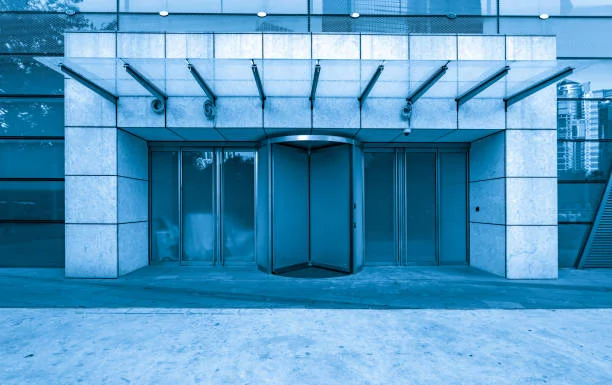When it comes to high-traffic commercial environments, durability is not a luxury but a necessity. From bustling hospital corridors to busy airports and retail centers, the doors in these settings face relentless wear and tear. Stainless steel commercial doors are engineered to meet these challenges head-on, offering a level of resilience that far outpaces conventional wood or aluminum alternatives. Their robust construction, typically using 16 or 18-gauge stainless steel, ensures they do not easily dent, warp, or deteriorate under pressure.
This durability is not merely about strength but about longevity and performance over time. Stainless steel doors resist rust, corrosion, and chemical damage, making them particularly suitable for both interior and exterior applications where exposure to the elements or harsh cleaning agents is common. In contrast to other materials, which may degrade or lose structural integrity, stainless steel maintains its appearance and functionality over decades with minimal upkeep. For facilities managers aiming to minimize long-term maintenance costs, this translates to significant savings and fewer operational disruptions.
Moreover, the durability of stainless steel supports a safer, more secure environment. Doors in high-traffic zones must consistently perform under the weight of daily use, and any failure can become a safety hazard or breach point. Whether in schools, laboratories, or public institutions, choosing a stainless steel door helps ensure that entrances and exits remain reliable. This reliability is a key factor behind the widespread adoption of stainless steel in mission-critical facilities, where performance simply cannot be compromised.
Hygiene and Cleanliness in Demanding Settings
In environments where sanitation is paramount, stainless steel commercial doors provide a level of cleanliness that is difficult to achieve with other materials. Healthcare facilities, food processing plants, and laboratories are just a few examples where every surface must be easy to clean and resistant to bacterial growth. Stainless steel is non-porous, meaning it does not harbor microbes or absorb contaminants, and can be cleaned thoroughly with hospital-grade disinfectants without degrading the surface.
Unlike wood doors, which can crack or absorb moisture, stainless steel does not support mold or mildew growth, making it ideal for areas with strict hygiene protocols. Its resistance to staining and corrosion also ensures that even after repeated exposure to water or cleaning agents, the doors maintain their sleek and professional appearance. This is particularly important in customer-facing settings like restaurant kitchens or pharmaceutical labs, where visual cleanliness communicates operational integrity.
Organizations across the country recognize the value of stainless steel in preserving health and safety standards. Many have turned to specialized suppliers, such as USA Fire Door, a nationwide distributor offering a wide range of commercial-grade options including stainless steel doors. With a portfolio designed for both functionality and compliance, these solutions serve as an important resource for businesses striving to meet regulatory and operational expectations in sanitation-sensitive sectors.
Enhanced Security Without Compromise
Security is a growing concern across many sectors, from retail and education to transportation and government facilities. Stainless steel doors offer an unparalleled level of protection against forced entry, vandalism, and even fire damage. Unlike lighter alternatives, these doors feature reinforced cores and can be fitted with heavy-duty locks, multi-point latches, and other integrated access control systems. This makes them a natural choice for areas that demand stringent security measures.
What sets stainless steel doors apart in the realm of security is not only their strength but also their adaptability. They can be configured to accommodate bullet-resistant cores, fire-rated cores, or acoustic insulation, depending on the needs of the facility. This makes them suitable for high-value storage areas, server rooms, and even panic rooms where added layers of protection are required. The versatility in configuration allows facility planners to address multiple concerns with a single product type, reducing complexity in procurement and installation.
Additionally, the visual presence of stainless steel carries an implicit sense of deterrence. Unlike wooden or aluminum doors, which may appear more decorative or less robust, stainless steel projects an image of authority and strength. In public or semi-public spaces where unauthorized access must be controlled, the use of stainless steel doors not only improves physical security but also enhances perception, signaling that the facility takes protection seriously. These psychological cues can be just as critical as physical barriers in maintaining secure premises.
Aesthetic Versatility and Design Integration
While stainless steel is often chosen for its utilitarian strengths, it also offers surprising aesthetic flexibility. The material can be finished in a variety of textures and sheens, from satin and brushed to mirrored or matte. This range allows designers and architects to align the doors with a facility’s interior design language, whether it’s ultra-modern, industrial, or even more traditional. As a result, stainless steel doors are no longer confined to industrial backrooms or service corridors.
In corporate headquarters, luxury retail environments, and contemporary public buildings, stainless steel doors are increasingly used as part of a deliberate design strategy. Their clean lines and minimalist look can serve as a neutral complement or a bold statement, depending on the context. When paired with glass inserts, laser-cut patterns, or custom hardware, stainless steel becomes more than just a functional element—it becomes a focal point of the space. This design potential challenges the notion that practical materials must sacrifice visual appeal.
Furthermore, the ability of stainless steel to reflect light and resist discoloration helps maintain a pristine appearance over time. This becomes particularly valuable in high-visibility areas such as hotel lobbies or commercial building entrances where aesthetics play a role in brand perception. Unlike painted or coated doors that may chip or fade, stainless steel retains its finish with minimal maintenance. This makes it a cost-effective solution for designers who are balancing performance and style.
Fire Resistance and Code Compliance
In commercial settings, safety and compliance with fire codes are non-negotiable. Stainless steel commercial doors can be manufactured to meet stringent fire-resistance standards, offering protection that saves lives and reduces property loss. With fire ratings typically ranging from 20 to 180 minutes, these doors are designed to contain fire and smoke, allowing critical time for evacuation and emergency response. This makes them an essential component in fire-rated assemblies throughout office buildings, hospitals, and schools.
Meeting building codes is not just about ticking boxes; it is about ensuring that a facility functions as a safe environment for employees, clients, and visitors. Stainless steel doors are often UL-listed or labeled by other regulatory bodies, which confirms that they meet nationally recognized safety standards. Having these certified products in place can also streamline the inspection and permitting processes for commercial developments. This reduces delays and legal liabilities that might arise from non-compliance.
In addition to fire resistance, many stainless steel doors also provide smoke protection and thermal insulation, enhancing their functionality in emergency situations. These features can be particularly valuable in multi-story buildings or enclosed facilities where smoke spread poses a greater risk than flames. By investing in doors that support comprehensive fire safety strategies, building owners not only protect their physical assets but also demonstrate a commitment to occupant welfare and regulatory responsibility.
Sustainability and Environmental Responsibility
Environmental considerations are playing an increasingly important role in commercial construction and renovation. Stainless steel is a recyclable material, making it a sound choice for projects that prioritize sustainability. At the end of its life cycle, a stainless steel door can be reprocessed into new materials, reducing landfill waste and contributing to a circular economy. This makes it an attractive option for businesses aiming to achieve LEED certification or reduce their carbon footprint.
Moreover, stainless steel manufacturing has evolved to incorporate more eco-friendly practices. Many suppliers use recycled content in their production processes, and advanced fabrication methods have significantly reduced energy consumption. These improvements allow architects and contractors to specify stainless steel doors with greater confidence that they align with green building goals. In addition, the long service life of these doors means fewer replacements, translating into less resource consumption over time.
Stainless steel also contributes to healthier indoor air quality, a growing concern in the post-pandemic era. Unlike some composite or coated materials that can off-gas volatile organic compounds (VOCs), stainless steel is inert and does not release harmful emissions. This characteristic is particularly valuable in schools, hospitals, and other sensitive environments where occupant health is a top priority. By choosing stainless steel, building stakeholders take a meaningful step toward both environmental and human well-being.
Cost Efficiency Over the Long Term
Though stainless steel doors may come with a higher upfront cost compared to alternatives, they often prove to be the more economical choice in the long run. The total cost of ownership includes not only initial purchase and installation but also maintenance, repair, and eventual replacement. Stainless steel’s resistance to damage, corrosion, and wear means that ongoing maintenance expenses are minimal. This durability leads to fewer replacements, reducing overall lifecycle costs.
Facility managers often find themselves grappling with the hidden costs of cheaper materials. Doors that warp, peel, or rust can compromise not only appearance but also safety and functionality. The time and money spent addressing these issues often exceed the initial savings. Stainless steel, on the other hand, stands up to abuse, environmental exposure, and cleaning chemicals without breaking down. Over a span of years, the initial investment is amortized across longer periods of reliable service.
In sectors where downtime equals lost revenue, the dependability of stainless steel doors adds another layer of financial logic. Businesses can avoid operational interruptions caused by malfunctioning doors or safety failures. Additionally, insurers may look favorably upon properties that use higher-grade fire-resistant and secure entry systems, potentially leading to reduced premiums. All things considered, stainless steel commercial doors offer not only durability and safety but also a strategic financial advantage.
Discover trending insights and must-read stories curated just for you at Management Works Media.






